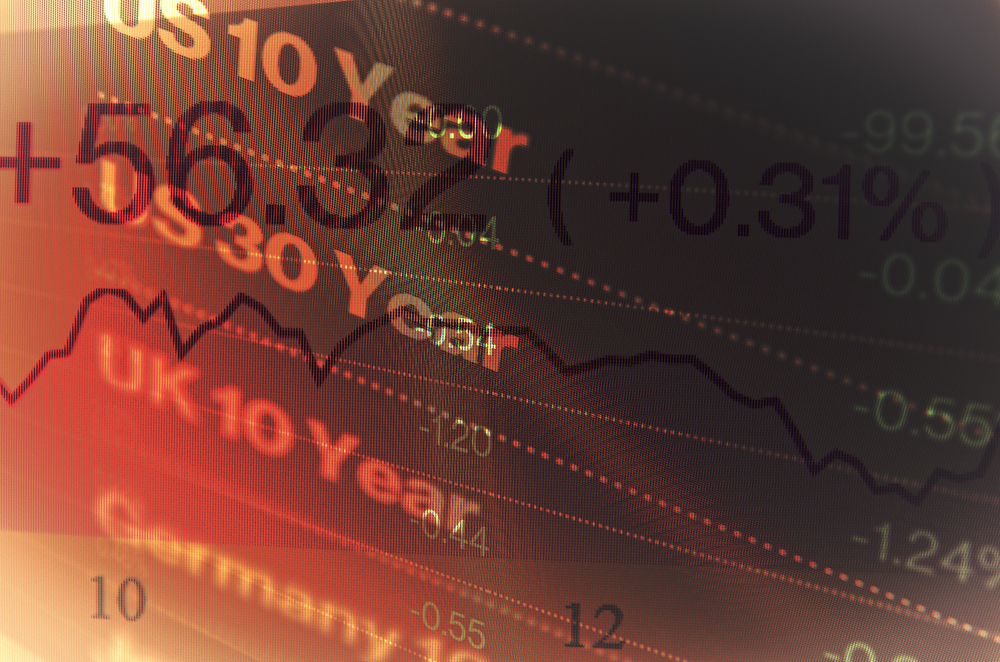This Is the Most Important Number on Wall Street
Andy Snyder|March 17, 2022

Yesterday we shared some jokes from Ronald Reagan… Today Jay Powell is bringing the humor to us.
The Fed has done it. It took to the big stage and raised rates.
What a joke.
Prices are rising by 7.5% each year, and now Powell and his cronies have raised the cost of money by 0.25%.
That’ll slow things down, they say with a straight face. It’s the beginning of a new era, their puppets on TV say.
Who knows… they might even believe themselves.
Meanwhile, the market and its many indicators tell us little will change.
When it comes to finding the truth, there’s one indicator we trust more than most. It tells us the true cost of money. When this gauge is high, the cost of borrowing money is high, and companies have to pay up to grow.
It creates a drag on the economy.
When the gauge is low, money is cheap. It pushes the markets and the economy higher… often artificially higher.
Right now… the gauge is in the negatives.
In fact, just last week, it was near record lows.
That means, despite the rhetoric, despite the market’s reaction and despite the straight face Powell keeps as he tells us his team is on the case, the free-money bonanza is far from over.
Calculating the Truth
We talk about this gauge often. It’s the “real rate” on the 10-year Treasury. It simply takes the nominal yield of the benchmark bond and subtracts the rate of inflation.
Folks must finally be paying attention to our crazy-man shouts about the metric. We’ve been standing on the corner of the street wildly waving our book around for months… but now folks are finally stopping to listen to what we have to say.
Our mailbag has been blasted by folks who want to know how to calculate the figure.
They’re smart. They’re doing the math in their heads.
They hear us say the real yield on the 10-year is -0.7%… and they start doing some ciphering of their own.
The printed rate of the 10-year Treasury is 2.15%. The latest inflation figure is around 7.5%.
Subtract the second from the first… and you don’t get -0.7%. You get something much further into the negatives… -5.35%.
What gives?
Readers want to know: Why the difference? Why isn’t the real yield being reported as something much lower? After all, if we buy a 10-year note today, won’t this decades-high rate of depreciation in the dollar instantly gnaw away at our proceeds?
Yes. It will. But we must think about tomorrow just as we think about today.
A Decade From Now
That’s why we don’t just use this year’s monstrous inflation rate in the math. Instead, we use the market’s anticipated average rate of inflation over the next decade – which also happens to be the life span of the bond we’re subtracting the figure from.
The rate of choice is the 10-year breakeven inflation rate. Right now, it looks like this…

Look carefully, and you’ll see the market’s long-term view on rising prices isn’t that far outside of the norm. In fact, it’s only slightly elevated.
Doing the math here, we subtract a breakeven rate of 2.85% from 2.15% (the 10-year Treasury’s yield) and get a real yield of -0.7%.
It’s simple… but powerful math.
And it’s critical knowledge for today’s investor.
Now… do we trust the market’s best guesses on inflation? Are things over the next decade really going to run just a bit hot? Will the dollar even be around in a decade?
More on that and what to do with all of this soon…

Andy Snyder
Andy Snyder is an American author, investor and serial entrepreneur. He cut his teeth at an esteemed financial firm with nearly $100 billion in assets under management. Andy and his ideas have been featured on Fox News, on countless radio stations, and in numerous print and online outlets. He’s been a keynote speaker and panelist at events all over the world, from four-star ballrooms to Capitol hearing rooms.



